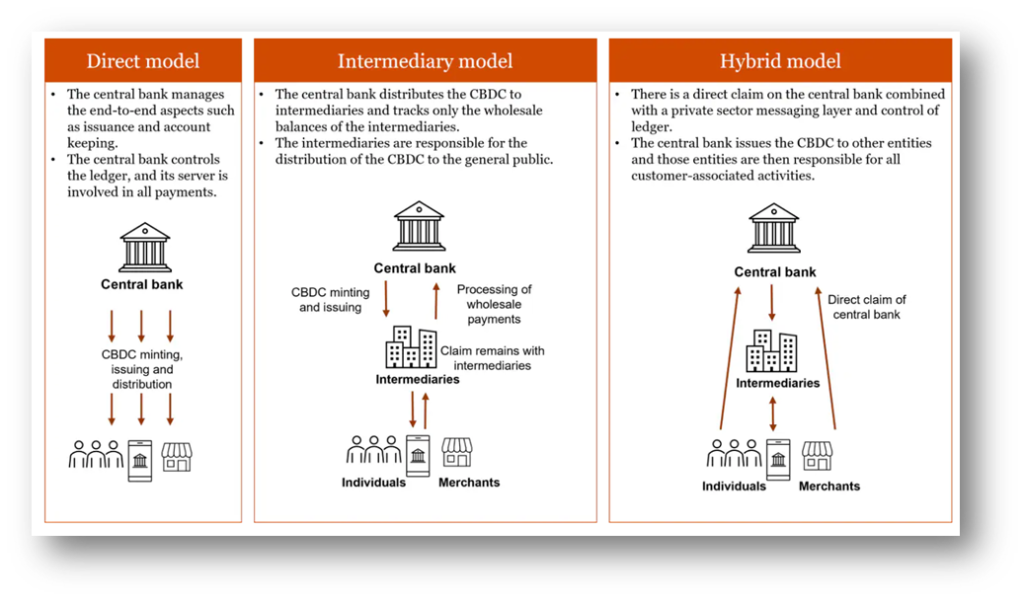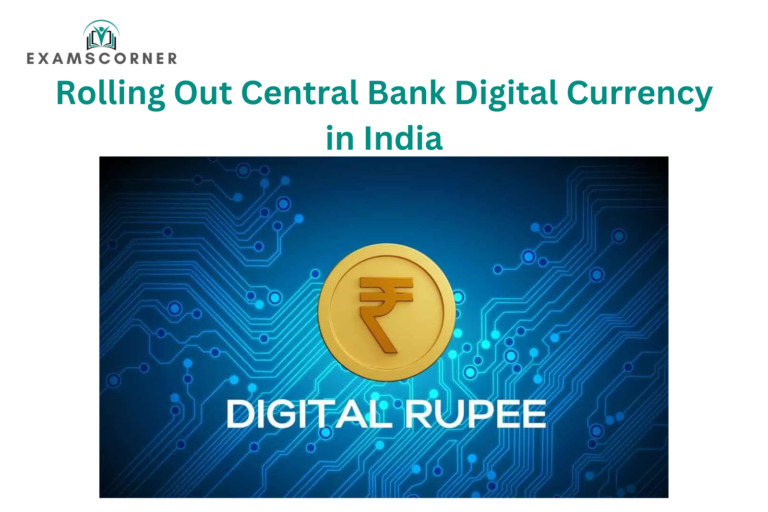The rise of digital currencies has brought new ways to handle money. Stablecoins, a type of cryptocurrency, offer the stability of being tied to traditional assets. In India, digital finance is changing rapidly with two key developments: the Reserve Bank of India’s (RBI) Central Bank Digital Currency (CBDC or e-rupee) and rupee-backed stablecoins. According to the Bank for International Settlements, digital currencies can reduce transaction costs by up to 50%. If implemented with proper regulations, the e-rupee and stablecoins could create a more efficient and inclusive digital economy in India.

What is Central Bank Digital Currency?
Definition: A Central Bank Digital Currency (CBDC) is a digital form of a country’s official currency issued and controlled by the central bank.
Benefits:
- Safer and easier than cash.
- Reduces costs linked to printing, distribution, and storage of money.
- Prevents risks like counterfeiting and theft.
- Promotes financial inclusion and cross-border payments.
- Helps in transitioning to a digital economy.
Types of CBDC (e-rupee):
- Retail CBDC:
- For private users like individuals and businesses.
- Acts as a digital version of cash for everyday transactions.
- Features:
- Safe and always available.
- Settles payments in real-time or near real-time.
- Wholesale CBDC:
- For interbank transactions like bond settlements and nostro transfers.
- Features:
- Used by select financial institutions.
- Improves security and efficiency in large-scale transactions.
Mode of Issuance:

Key Benefits of Central Bank Digital Currency
- Enhanced Financial Inclusion:
- Helps unbanked and underbanked people access banking through mobile-based digital wallets.
- RBI plans offline CBDC-R functionality for areas with limited or no internet.
- Reduced Transaction Costs:
- Saves costs by eliminating the need to print and transport physical currency.
- For example, printing a Rs 100 note costs around Rs 15-17 over its four-year life, which CBDC can significantly reduce.
- Better Monetary Policy:
- Enables real-time monitoring of money flow.
- Helps target specific issues like hoarding or black-market activities.
- Example: RBI’s wholesale CBDC pilot in 2022 improved interbank settlements.
- Transparency and Reduced Crime:
- Traceable transactions can prevent corruption, tax evasion, and financial crimes.
- FATF estimates that only 1% of global illicit financial flows are recovered. CBDCs can change this with better tracking.
- Faster Cross-Border Payments:
- CBDCs can simplify and speed up international payments while reducing costs.
- Example: India’s G20 focus aims to lower remittance costs globally by 2027.
- The m-CBDC Bridge Project (with Thailand, Hong Kong, and UAE) showed near-instant settlements.
- Encourages Financial Innovation:
- Creates opportunities for fintech companies to develop new payment systems.
- Example: CBDCs can integrate with IoT for micropayments, boosting India’s smart city initiatives.
- India has the highest fintech adoption rate of 87% globally, and CBDCs can accelerate this trend.
- Crisis Resilience:
- Ensures seamless transactions during crises like pandemics or natural disasters.
- Example: During COVID-19, welfare funds could have been distributed faster using digital wallets powered by CBDCs.
- Supports De-Dollarization:
- Reduces reliance on foreign currencies like the US dollar.
- Example: India’s rupee-based trade agreements and RBI’s wholesale CBDC pilots for international trade.
Concerns with CBDC
- Cybersecurity and Privacy Risks:
- CBDC systems could attract cyberattacks, risking national financial security.
- Example: The 2020 SolarWinds attack impacted critical systems.
- High Costs:
- Developing and maintaining CBDC infrastructure is expensive.
- Example: Nigeria’s eNaira project incurred significant costs.
- Impact on Banks:
- CBDCs could reduce deposits in commercial banks, limiting their ability to lend.
- Example: Bank of England noted potential reductions in deposits by 4-12%.
- Technological Challenges:
- Many areas in India lack robust digital infrastructure.
- Example: Only 25% of rural India is digitally literate, and 45% of the population lacks internet access.
- Cross-Border Issues:
- Different global standards make CBDC integration difficult.
- Example: m-CBDC Bridge Project is different from the digital Euro or Digital Rupee.
- Economic Risks:
- Smaller economies might face dollarization risks if foreign CBDCs dominate.
- Example: El Salvador faced challenges with Bitcoin adoption.
Rupee-Backed Stablecoins and How They Complement CBDC
Definition:
- Rupee-backed stablecoins are digital tokens tied 1:1 to the Indian rupee. They operate on blockchain technology and offer fast, low-cost transactions.
- Unlike cryptocurrencies like Bitcoin, stablecoins are less volatile.
How Stablecoins Complement CBDCs:
- Cross-Border Payments:
- Stablecoins can fill gaps in international payments where CBDCs are not yet compatible.
- Encouraging Innovation:
- Enables decentralized finance (DeFi) and e-commerce platforms to grow.
- Bridging Financial Systems:
- Acts as a link between traditional finance, CBDCs, and blockchain ecosystems.
- Initial Support for CBDC Rollout:
- Serves as a temporary solution until CBDCs are fully functional.
Steps to Effectively Implement CBDC in India
- Strengthen Digital Infrastructure:
- Expand broadband access in rural areas through projects like BharatNet.
- Improve digital literacy with training programs.
- Enhance Cybersecurity:
- Use advanced encryption and AI-based monitoring.
- Collaborate with agencies like CERT-In for threat detection.
- Integrate with Existing Systems:
- CBDCs should work alongside current systems like UPI and Jan Dhan accounts.
- Example: Link CBDCs with Aadhaar for financial inclusion.
- Educate the Public:
- Conduct awareness campaigns to explain CBDC benefits.
- Example: RBI’s DigiDhan Mela model can be replicated.
- Develop Offline Capabilities:
- Enable offline CBDC use with technologies like NFC-enabled smart cards.
- RBI’s offline retail CBDC trials are promising.
- Ensure Global Interoperability:
- Align with global standards for cross-border payments.
- Example: G20’s roadmap emphasizes uniformity.
- Create a Legal Framework:
- Address issues like taxation and consumer protection.
- Example: Integrate the Personal Data Protection Act 2023 into the CBDC framework.
- Public-Private Partnerships (PPPs):
- Collaborate with fintech and blockchain startups to design efficient solutions.
- Example: Use private expertise for user-friendly CBDC applications.
By addressing these challenges and leveraging the strengths of both CBDCs and stablecoins, India can lead the way in building a robust, inclusive, and efficient digital financial system.



